The old city of Ghent, also known as Gent in Flemish or Gand in French, is a charming maze of passageways bordered by charming steeple-roofed buildings that meander beside lovely canals. Ghent is one of Belgium's top architectural tourist destinations, but unlike Bruges, it is free of the throngs of tour buses.
One of the greatest ways to view the city is on foot during the summer, when most of the notable structures are lit up. Another excellent way to see it is via canal boat along one of the many branches of the Scheldt and Leie Canals, which cross the city.
Ghent is one of the top destinations in Belgium for history and architectural enthusiasts, and its low tourist density makes it a perfect spot to learn about the contemporary local Flemish culture.
Find out how to schedule your time with our selection of the finest sights and activities in Ghent.
1. Saint. Bavo Cathedral (Sint-Baafskathedraal)
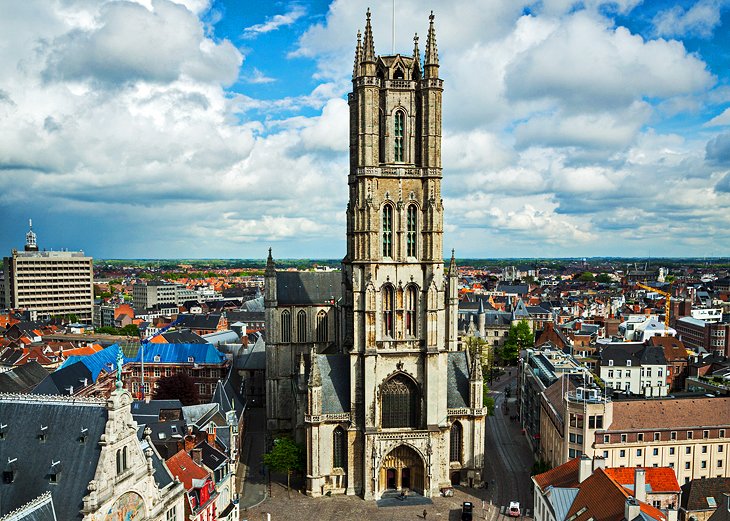
The Cathedral of St. Bavo, a magnificent brick and granite structure with a Romanesque crypt of its predecessor, Sint-Jans church, is located on the eastern side of Sint-Baafsplein. Charles V gave the cathedral its present name after he destroyed the old one to build a castle.
The main nave and the late Gothic tower were constructed in the 15th and 16th centuries, while the High Gothic cathedral choir was constructed in the 13th century.
The cathedral's spacious interior is lavishly decorated with some rare paintings. Examples include Frans Pourbus' Christ With the Doctors and Peter Paul Rubens' The Conversion of St. Baaf, both from 1624. (1571).
The Adoration of the Mystic Lamb, also known as The Altar of Ghent, is the most well-known piece of art in this location and is regarded as the absolute pinnacle of medieval Flemish painting.
The vast crypt beneath the main church is home to several bishops' tombs as well as a valuable treasure. One of the chapels notably displays the magnificent Calvary triptych painted in 1464 by Joos van Wassenhove (Justus van Gent).
2. The Fortress of Gravensteen
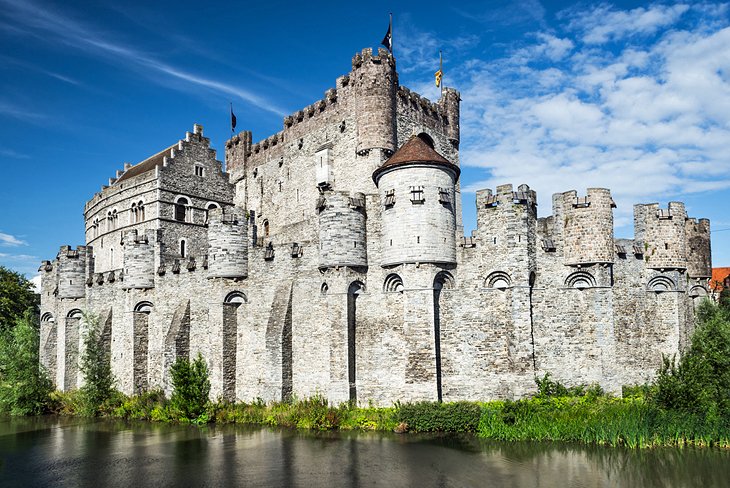
One of the most powerful moated strongholds in Western Europe is Gravensteen, which is bordered by the River Lieve. On the site of an earlier building from the ninth century, it was constructed between 1180 and 1200 under Philip of Alsace's orders and was designed in the manner of Syrian crusader castles. Philip was the former count of Flanders. It continues to be a rare illustration of the fortification techniques used in medieval Europe.
It lost its military purpose in the fourteenth century and was utilized by the counts to manage the land. It was turned into a cotton mill and worker apartments in 1800 when it was purchased by a private individual.
Visitors are welcome to explore the majority of the castle's grounds, including the ramparts. The historic Sint-Veerleplein, possibly the oldest square in Ghent, stretches out in front of the castle, albeit the earliest date for the adjoining façade is the 17th century. This square served as a marketplace as well as the location of the Inquisition victims' executions and burnings.
3. Ascend The Belfry to the Top (Het Belfort)
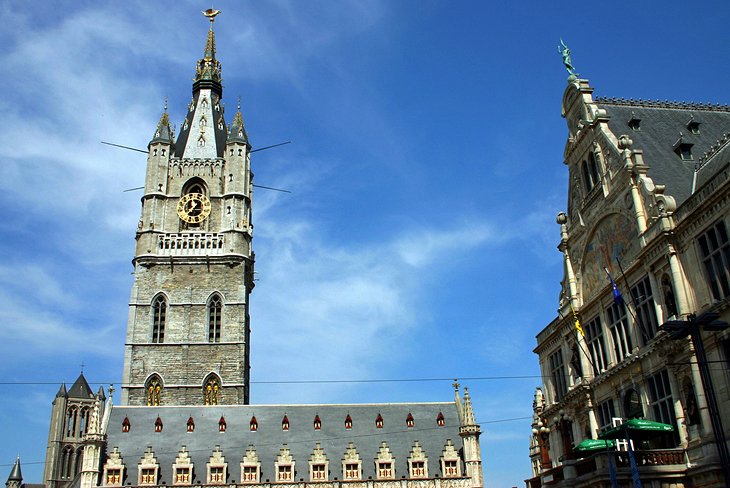
The 91-meter-high belfry, a representation of the city's independence, is located on the west side of Sint-Baafsplein and is where the charters governing Ghent's privileges were held.
https://utravelo.com/en/northwest-glacier-national-park-and-the-mississippi-river
The tower was largely finished by 1338, having been started in 1300. The wooden bell tower from 1380 was replaced by the current spire, which was rebuilt to resemble it did in the 14th century.
A gilded copper dragon that was first erected in 1377 sits atop it. It is a reproduction today, as are the four armed individuals who stand at each corner of the platform. Only one of the originals of these is still in existence and is visible on the first floor.
Great views of Ghent's center old town can be had by climbing (or taking the elevator from the first level) to the top of the tower.
The magnificent Cloth Hall is located next to the bell tower. The wool and cloth traders met in this Simon van Assche structure from 1426 to 1441, and it was afterwards turned into a jail. It now has a café-restaurant that is well-liked by tourists.
4. Explore the canals of Gent
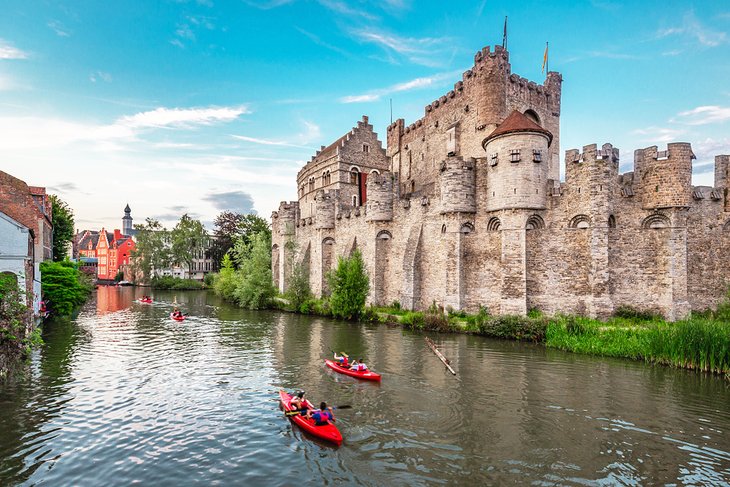
The canals of Ghent offer the most tranquil viewing in the city and are a draw in and of themselves.
Ghent's canals provide a variety of options to explore the city, including regular public boat excursions, private tailored cruises in a classic tow-barge, and kayak rentals.
Regular public cruise departures are offered by a number of different businesses from piers in the heart of the city. The standard boat tour lasts 40 minutes and passes by all of Ghent's significant landmarks, including the belfry and Gravensteen as well as the Leie canal's guildhall architecture.
This 40-minute guided boat ride in Ghent leaves at the Graslei dock and travels the Leie canal route by all the important landmarks, including Gravensteen. Tickets for public tours can be purchased on the day of the tour or in advance online.
5. Go about the Graslei neighborhood
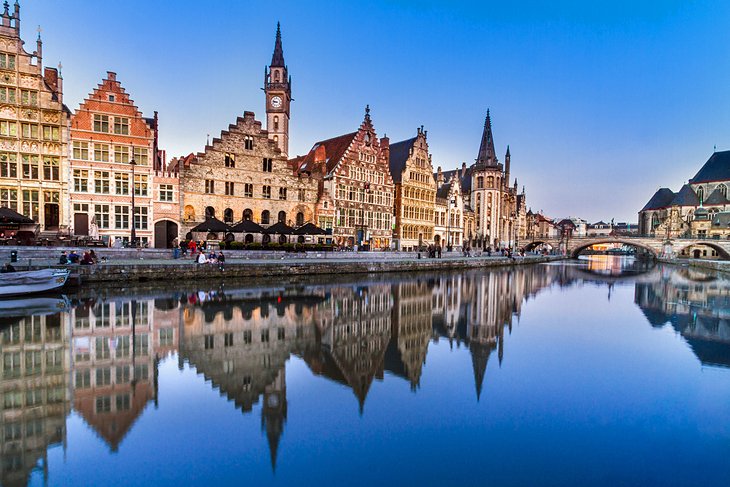
Around the Graslei Canal are some of Belgium's finest guild houses. Anyone with more than a passing interest in architecture should take a stroll here.
Be sure to look at the nearby Gildehuis der Vrije Schippers (House of the Free Boatmen), which was constructed in 1531 in the Brabant Gothic style, and Gildehuis der Graanmeters (House of the Grain Weighers), which features a stepped gable that was constructed in 1698.
The Flemish Renaissance Tolhuisje (Customs House), built in 1682 and situated close to the Romanesque Spijker or Koornstapelhuis, may be found further along (around 1200).
This unusual row of guild houses is completed with the Brabant Gothic Gildehuis der Metselaars (House of the Masons) from 1527.
6. Investigate Korenmarkt
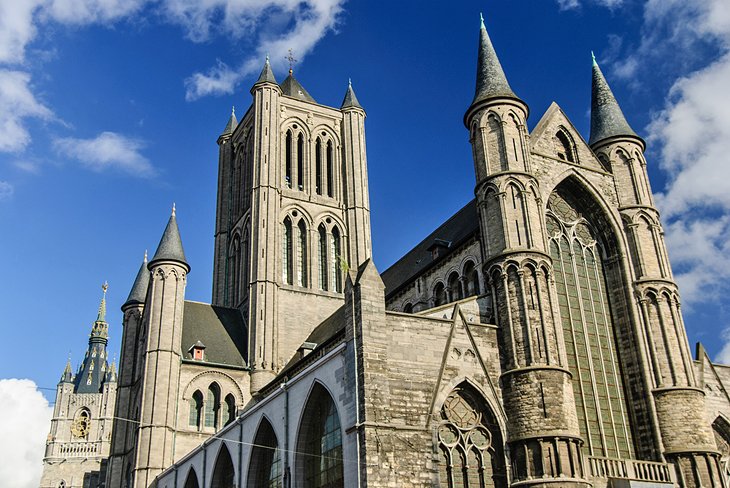
Several of the medieval Guild Houses (Gindenhuis) situated along the Leie Canal can be found at Ghent's Korenmarkt (Wheat Market), a historic square. This region was once a significant trading hub and is now a bustling neighborhood renowned for its beautiful architecture and plethora of eateries.
Gense Fieste, a 10-day festival that includes a lot of music, theater, and other entertainment as well as a lot of food vendors, takes place every year in late July in the Korenmarkt.
One of Ghent's most recognizable landmarks is the St. Nicholas Church, which abuts the Korenmarkt on the southern side. The Scheldt Gothic exterior is made of Tournai bluestone and dates to the thirteenth century. Its majestic central tower and an Aristide Cavaillé-Coll organ are noteworthy.
7. The Cathedral of Saint Michael and the Sint-Michielsbrug
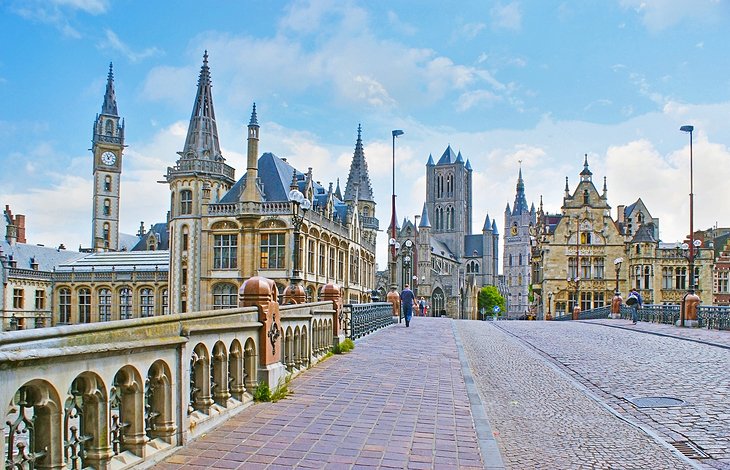
A massive Gothic church made of Belgium sandstone, Saint Michael's Church is recognized for its ultimate grandeur and is situated on the western shore of the Leie. A confessional from the early 17th century in the Baroque style, as well as the pulpit, altar, and other interior features, are all in the Neo-Gothic design.
Many statues from the 18th century, works by Baroque painters like van Dyck, and the Relic of Doorn, which was a gift from Mary Queen of Scots, are among the church's valuables.
Saint Michael's Bridge, a lovely stone-arch bridge famed for its breathtaking cityscape views, located right next to the church. The three recognizable towers of Ghent are all visible from here, making it a great location for photos. For a particularly lovely view of the city's landmarks lit up, visit in the evening.
8. Learn about the Korenlei Canal Region
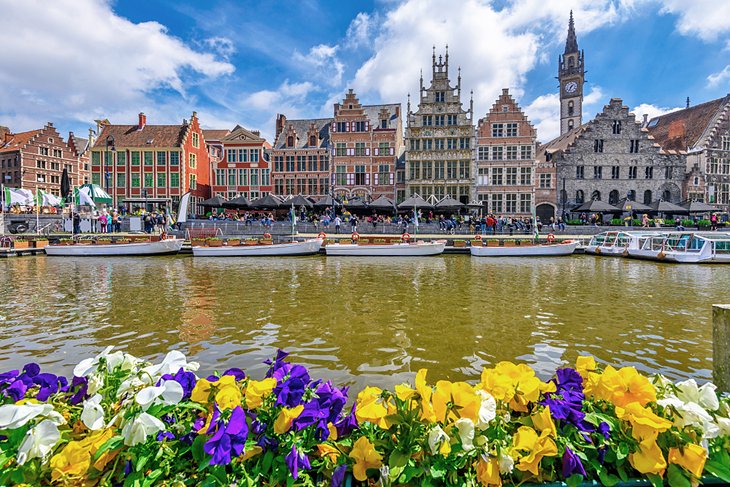
The Sint-Michielsbrug descends to the Korenlei Canal, which is surrounded by beautiful facades and provides the best perspective of the even more exquisite homes on the Graslei's other bank.
Keep an eye out for the following homes as you stroll around here: The former Hof van Gruuthuse (House of Duke Egmont), which was located at Number 15, and which was built in 1352, has been replaced with a structure with a Neoclassical exterior that also includes Numbers 17 and 19, the Hotel de Ghellinck.
The Gildehuis der Onvrije Schippers (House of the Tied Boatmen), a Baroque structure constructed in 1739, is located at No. 7 along the Korenlei.
Pay note to No. 24's stunning façade, Lintworm en Krocht, as well. This was a 12th-century Romanesque château that was completely reconstructed at the start of the 20th century.
9. Town Hall (Stadhuis)
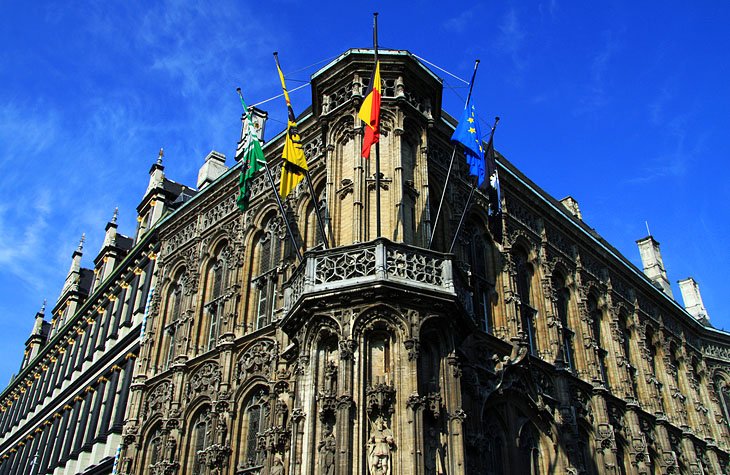
Ghent's spectacular town hall blends a number of architectural forms because it was constructed over a long period of time.
The architects Rombout Keldermans and Dominic de Waghemakere constructed a new wing in the finest late Gothic form, beautifully embellished with statues, on the oldest elements of the building on the Hoogpoort, finished in the manner of Bruges City Hall in 1482 and housing the council chambers.
However, construction on this portion, which is best viewed from the intersection of Hoogpoort and Belfortstraat, was put on hold in 1539 as a result of theological controversies.
Just the Peace Hall (Pacificatiezaal; actually the courthouse for the Keure, the guardians of the town constitution) and the Marriage Chapel, both of which date from 1535, were erected, constituting only a quarter of the entire plan.
Construction was only continued at the end of the 16th century, which is why the wing that faces the Botermarkt and the Throne Room on the upper floor are both in the Renaissance style.
10. Fine Art Museum (Museum voor Schone Kunsten)
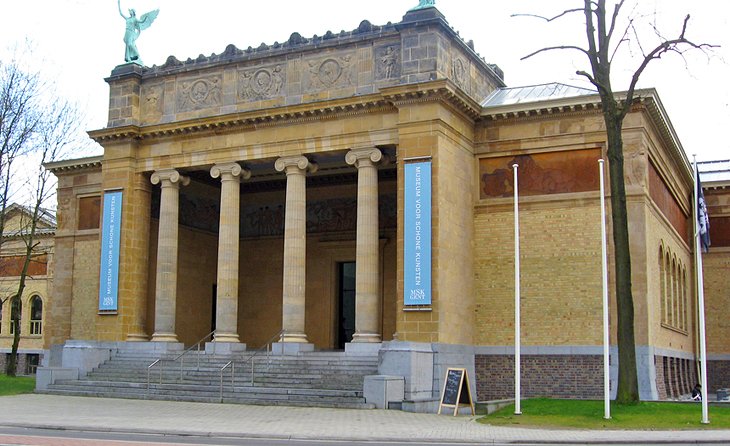
The collection's primary focus is on paintings from the 15th to the 20th centuries. Eight beautiful Brussels wall tapestries, three with themes from the Darius narrative (from the 17th century), and five with the topic "Triumph of the Gods," are shown in the central hall that is connected to the entrance hall (1717).
The Old Masters are to this hall's left. Two prominent pieces by Hieronymus Bosch can be found in Room B: Saint. Hieronymus and Carrying of the Cross.
#DYK Sanofi is among the few players in the 🇧🇪 #PharmaSector that cover all #pharma activities, from research to patients?
— Sanofi Belgium (@SanofiBelgium) October 18, 2021
With 4⃣ sites in Belgium – Geel, Ghent, Diegem and Brussels – #Sanofi is definitely #aWinningFormula! pic.twitter.com/chVRQcb9JB
Paintings from the 19th and 20th centuries, mainly those by Belgian artists, can be found to the right of the Tapestry Room.
Also, the museum offers a wide range of temporary exhibitions that are on loan from other top-notch fine arts museums.
11. Ghent City Museum, (STAM)
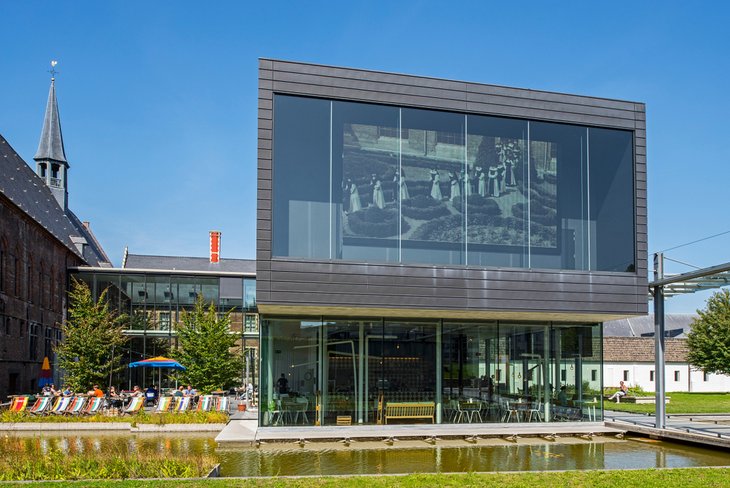
The Museum of Ghent is one of the richest in Belgium and is housed in the brick structures of the Cistercian Abbey of Bijloke. It features a wonderful collection that recounts the history and culture of the city in a distinctive historical setting.
With the use of several rooms and cutting-edge multimedia displays, the exhibits, which include jewelry, weaponry, textiles, literature, paintings, religious icons, and ceramics, chronologically portray the story of Ghent.
The refectory, built in the fourteenth century and featuring a remarkable brick gable, is the focal point of the museum.
There are frescoes painted on the inner walls, including a 10-meter-long depiction of the Last Supper.
The nearby monastery building has a number of temporary exhibits that the museum hosts throughout the year in addition to its permanent collection.
12. Explore the Historic Market District
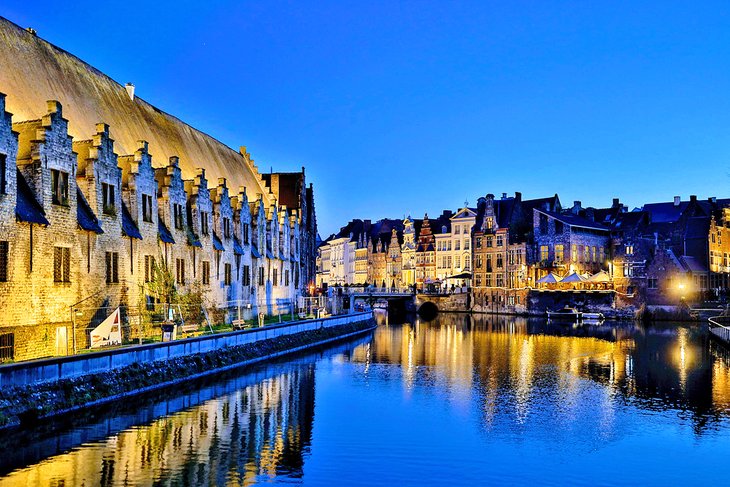
The Old Market (Groentenmarkt) was once a fish market before switching to a primarily vegetable market in the 18th century. Here there stood Ghent's pillory during the Middle Ages.
The long Groot Vleeshuis, a medieval covered meat market with a guild house, chapel, and multiple gables in the roof, is located on the west side of the market area. The structure was constructed between 1406 and 1410 and was repaired in 1912.
The Penshuizeken (entrails cottage), where the destitute were given the entrails of killed animals, is located at the southernmost point of the Vleeshuis.
You can wander around the Vleeshuis building to see the interior even if you're not hungry because it is now a really nice restaurant.
13. Vismarkt and Kraanlei's architectural designs
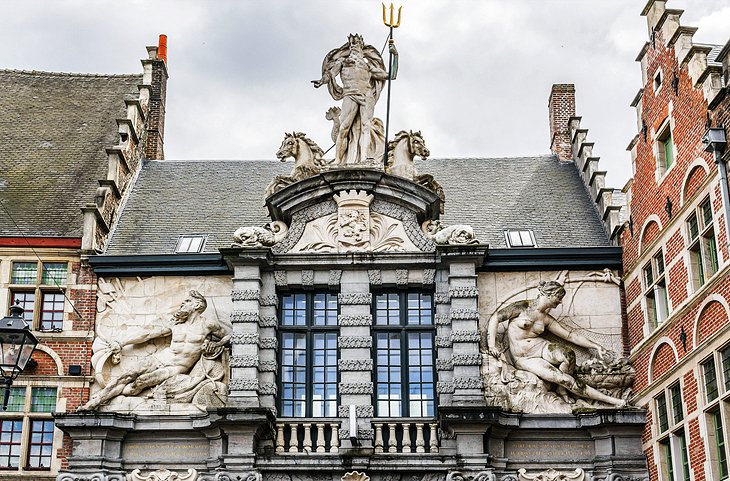
The excellent Baroque edifice at Sint-Veerleplein No. 5 is the former fish market, erected in 1689 according to plans by Artus Quellin.
Neptune and allegorical depictions of the Scheldt (masculine) and Leie are shown on the gateway (female).
The Sint-Veerleplein and Kraanlei Canal, which are both bordered by opulent homes, are to the northeast.
No. 1, the Craenenburgh, is the first building on the left. The homes De Lelye (Nos. 3–11), constructed in the Brabant Gothic style circa 1500, are the next two. An old fish market may be found at No. 13 in den Bleikenmarkt.
House No. 75, De Klok, which was built in the 17th century, is located further along the Kraanlei. It has a spiral staircase and is embellished with numerous allegorical reliefs. De Zeven Werken van Barmhartigheid at number 77 and Het Vliegend Hert at number 79 are two baroque townhouses from the 17th century that include magnificent reliefs.
14. Explore the Sint-Baafsabdij Ruins
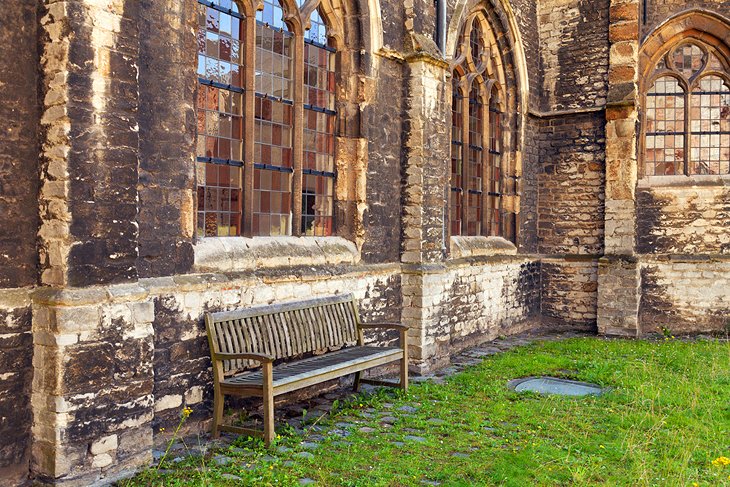
The ruins of Sint-Baafsabdij, an abbey founded in 630 by St. Amandus and rebuilt after being devastated by the Normans in the 10th century, are located in the east of the city, across the Slachthuisbrug over the Leie Canal.
From the ancient abbey, only the octagonal lavatory, a gallery of the late Gothic cloisters, and a portion of the chapter house and refectory survive.
The Museum voor Stenen Voorwerpen, which houses an exceptional collection of medieval tombstones, Ghent sculpture, architectural artifacts from the 12th to the 18th centuries, as well as mosaics, is located in the refectory, which features stunning 12th-century Romanesque murals.
15. Museum voor Volkskunde
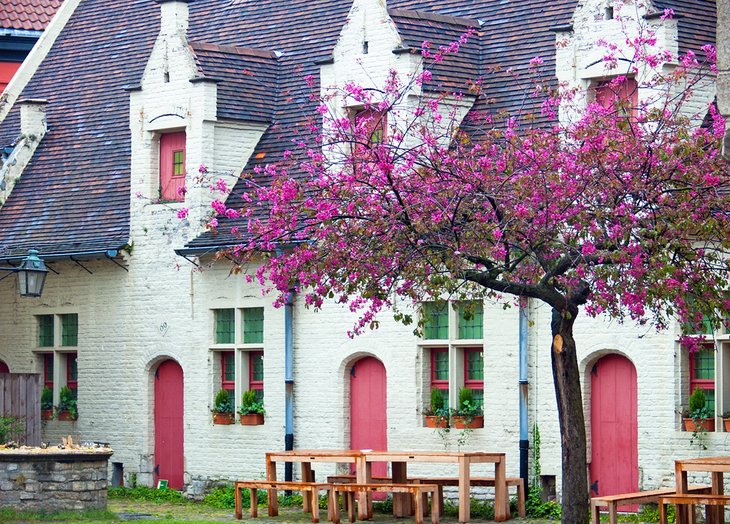
This 1363-founded former children's hospital is one of Belgium's last remaining Godshuizen and was immaculately restored in 1962. These homes were established by wealthy families for the underprivileged.
18 typical Flemish cottages that are joined to one another in a charming courtyard today house the extensive Museum voor Volkskunde, which, with its noteworthy collection of tools, records, and everyday items, paints a vivid picture of Flemish common life in the early 20th century.
The reconstructed workshops, living rooms, dining room, barbershop, cobbler's shop, apothecary's shop, confectioner's bakery, and candlestick maker's workshop are of great importance.

